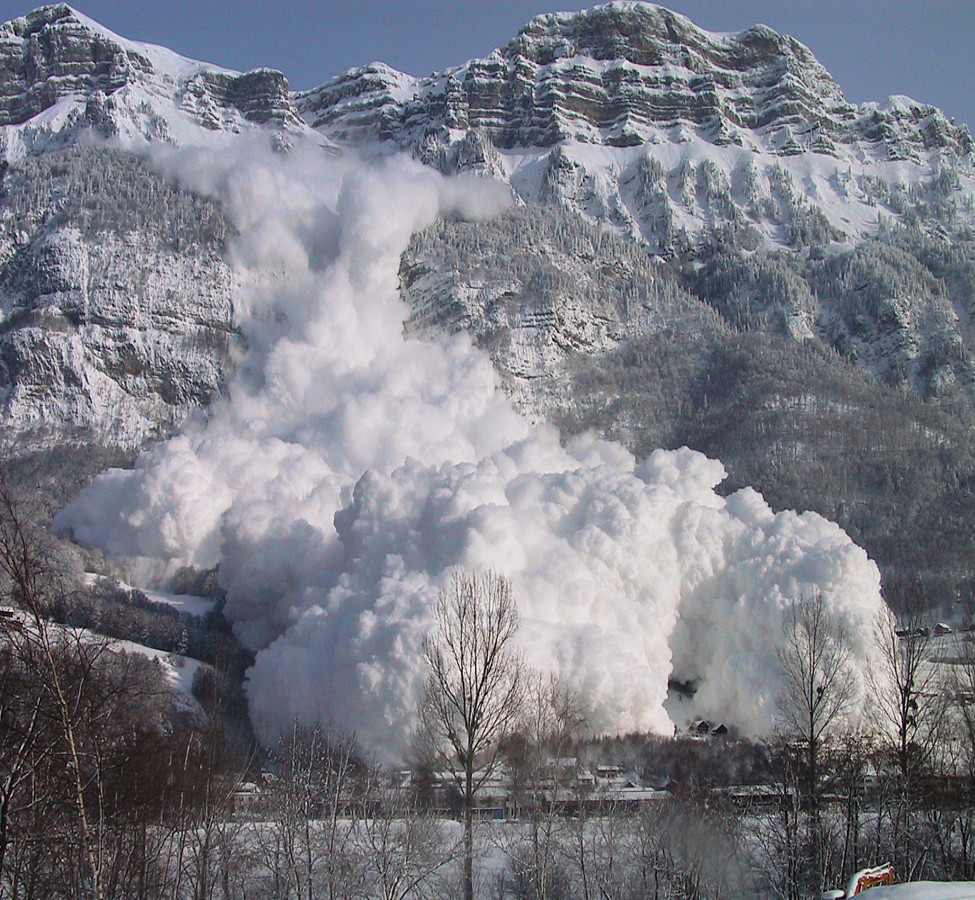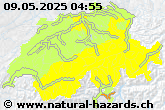The rockslide of Goldau of 2nd September 1806
An eyewitness reports:
«Joachim Kramer, mountain farmer at Rossberg, had warned. The crevices had widened up and the lower rock face, pointing to Spitzibüöl, threatened to crash down into the valley at any moment. But no one listened to him. The geology professor Albert Heim writes in his book «Rockslide and human lives» that there would have been enough time to flee, but no one wanted to read the obvious signs.
Professor Heim gives the example of the brothers Kaspar and Franz Beeler, who lived very close to the debris line and who were enjoying a glass of brandy with old Dominik Horat that afternoon. A day-labourer working nearby pointed out the danger to them, but they just told him that there had been rumblings many a time, there was nothing to worry about and that they wanted to finish their pipes. «While the day-labourer managed to seek shelter», writes the chronicler. «The three fell victim to their own callousness.» Nowadays, people would – perhaps – believe the day-labourer, as we know today that this rockslide was one of the twenty that went down at Rossberg. We also know that Goldau does not originate from gold but from the Swiss German «golet» which means debris.
On 2nd September 1806, between five and six o’clock in the late afternoon, the rock crashed down. Within three or four minutes it buried 6 square kilometres with 35 to 40 million m3 of debris. Four debris streams thundered down to the valley; the first one in the direction of Oberarth, the second and third one buried the village Goldau towards the slopes of Rigi and the fourth and biggest one rolled towards Lake Lauerz. It downsized the lake by one seventh, whereas the mass crashing off Rossberg was only 1/1000. As already mentioned, the rockslide only lasted for three or four minutes, but the impact was enormous. The yellow-reddish dust-fog over Goldau made people believe in a blast. There were rumours about overthrown charcoal stacks and about revolution. The shaking of the earth could be felt in Bürglen, Buochs and at Lake Walen.
It is reported that there were 437 casualties, among them 6 aristocrats from Berne. 220 people were rescued. Over 185 horned cattle and 209 other livestock were killed and 102 houses smashed. At Lake Lauerz, 10 people died between Lauerz and Seewen due to the tidal wave the rockslide caused. Houses at the lakeshore as well as the church of Lauerz – except for the tower – were destroyed. Damage and misery was big and since the rain kept falling, the newly formed little lakes with their backwater formed the threat of typhoid. Rescue teams worked during 16'000 shifts and 19 cantons donated more than CHF 120,000.--, one fifth coming each from Berne and Zurich. Scallywags tried to profit from this catastrophe by travelling around as beggars, pretending to be claimants. In New York, an American gangster gang collected donations, allegedly for the victims and, ostensibly, in the name of Swiss government. A lot of diplomacy was demanded of the American ambassador in Paris in order to catch the gangsters.
Schwyz assigned Franz Xaver Triner, not only schoolmaster and organist in Bürglen, but also an excellent illustrator and copper engraver with two pictures. The first shows Lake Lauerz with all the details of the rockslide and the lonesome tower of the buried church of Lauerz, a stranded cabin as well as a ship transporting a coffin. The other picture shows the catastrophe, looking down from Fallboden. Both pictures were engraved. The pressure plates are now exhibited in the public record office of the canton of Schwyz. It is reported that it was an order of the government, even hankies had been ordered – though there are no records about the sales revenue. In the report of the «General overview on the receipt and use of all national and international taxes which were given by the Cantons, communities and others donated due to the disaster of 2nd September 1806 in Goldau», published on 20th April 1808 and showing a grand total of CHF 126,663.--, there is only the following footnote to be found: «NB: There will be explicit records on sale and return of the hankies and the engravements.»
Source: Felchlin, Max: The Rockslide of Goldau.
back



